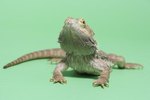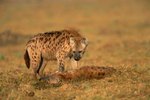
Asian long-horned beetles (Anopoplophora glabripennis) are an East Asian insect species. Due to their habits of wreaking devastation on a wide array of hardwood trees, Asian long-horned beetles have earned international reputations as persistent, annoying and pernicious pests -- from Korea all the way to the United States.
About Asian Long-Horned Beetles
Although Asian long-horned beetles hail from Korea, Japan and China, they have a presence in North America due to being packed -- unintentionally -- in mercantile items in the time frame of 1994 to 1996. Asian long-horned beetles have negatively affected to the point of decimating trees in many different places within the continent, including some in Toronto, New York and Chicago. Some of the trees that Asian long-horned beetles frequently employ as hosts are maple, birch, elm and sycamore trees, among others.
Lack of Protection
These lustrous black bugs are undoubtedly seen as nuisances, and they have more problems on their plate than human eradication -- think predation. Members of this species lack any known protective mechanisms against danger, according to the University of Michigan's Animal Diversity Web feature. Unlike many other insects, such as flies, they don't have the handy ability to fly off into the distance whenever threats approach.
Bugs, Bugs, Bugs
A broad assortment of bugs regularly dine on Asian long-horned beetles, although other animals do frequently zero in on them as prey, too. Their prominent insect predators include click beetles, flat bark beetles, clerid beetles, ambush bugs, thrips, assassin bugs, carpenter ants and certain varieties of wasps, such as those of the family Braconidae. Spiders, although not technically insects, also often feed on these beetles.
Other Kinds of Animals
Invertebrates aren't the sole predators of these wood-boring creatures. Other kinds of animals that make meals out of these insects are woodpeckers, toads, scorpions and lizards. Roundworms also can be hazardous to the species, specifically to larvae.
Identifying These Beetles
If you ever suspect the worrying presence of Asian long-horned beetles in a tree, knowledge of the appearance of the insects might be helpful tools for confirmation. Fully mature specimens are generally 0.78 to 1.3 inches in length. Though their bodies are mostly black, their limbs are conspicuously whitish-blue. Their wings are adorned with highly contrasting pale blots.
References
- New York State Department of Environmental Conservation: Asian Longhorned Beetle
- UVM Entomology Research Laboratory: Asian Longhorned Beetle
- University of Michigan Animal Diversity Web: Anoplophora glabripennis
- USDA Forest Service: Asian Longhorned Beetle
- New York Invasive Species: Asian Longhorned Beetle
- University of Wisconsin-Madison Department of Entomology: The Potential for Biological Control of Asian Longhorned Beetle in the U.S.
- The Nature Conservancy: Asian Longhorned Beetle
- Wisconsin Department of Natural Resources: Anoplophora glabripennis
Photo Credits
-
Photos.com/Photos.com/Getty Images




